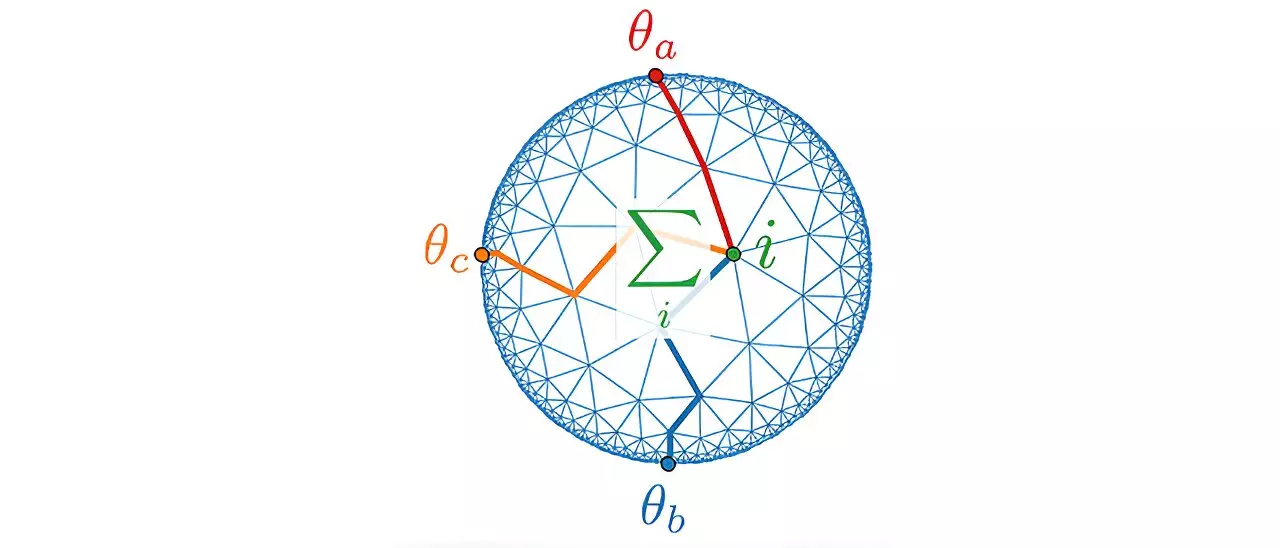Gravity has long stood as one of the fundamental forces shaping our universe. Through centuries of research, physicists have mastered the gravitational principles governing large-scale phenomena—from the orbits of celestial bodies to the mechanics of spacecraft propulsion. However, the understanding of gravity falters at the quantum level, where classical inquiries yield diminishing returns. This gap in knowledge has sparked ongoing discussions within the scientific community, prominently featuring voices like Professor Johanna Erdmenger from the University of Würzburg in Germany. Her advocacy for an integrated approach to gravitational theory invites us to ponder the vast complexities that defy our current comprehension.
Erdmenger and her colleagues propose that traditional methods reach their limit when attempting to describe gravity at the boundaries of elements like black holes or the Big Bang. The significant hurdle lies in reconciling the macroscopic experience of gravity with the minuscule realm of quantum mechanics—an intersection where understanding is fragile at best. As the discourse around these theories expands, researchers aim to bridge the chasm by exploring uncharted territories along the lines of quantum gravity.
At the forefront of this quest is the AdS/CFT correspondence, a theoretical framework that holds promise for advancing the science of quantum gravity. This correspondence posits that gravitational theories in a high-dimensional space (Anti-de-Sitter space) can be effectively mapped to quantum field theories defined on simpler, lower-dimensional boundaries. To visualize this, one can think of the universe as a funnel: the intricate gravitational phenomena occurring within the depths of this funnel find parallels in the simpler quantum activities observed at its rim.
Despite its apparent complexity, Erdmenger notes the conceptual accessibility of this correspondence, offering a pathway through which previously insurmountable gravitational challenges can be approached with newfound clarity. The analogy to a holographic image on a currency note speaks volumes: much like a hologram, which projects an elaborate three-dimensional image from a two-dimensional surface, the dynamics at the outer layer of the funnel echo the profound complexities concealed within.
In an exciting development, Erdmenger’s research team has embarked on empowering these abstract notions with empirical validation. Their innovative use of an electrical circuit designed to replicate the effects of curved spacetime allows them to simulate gravitational dynamics, thus providing a tangible experimental basis for the AdS/CFT correspondence. Through this cerebral approach, they enable the transfer of information and signals in a manner that mirrors cosmic phenomena—each junction of the circuit serving as a microcosm reflecting gravitational interactions dispersed through spacetime.
The preliminary results suggest that the observables at the periphery correspond to the gravitational conditions endured deep within the circuit’s structure. As reported in “Physical Review Letters,” these findings lead researchers closer to dismantling age-old theories limiting our grasp of both gravitational and quantum realms. By confirming these hypotheses, the Wurzburg team not only augments academic discourse but might also herald a new era in quantum technology, connecting theoretical science with practical applications.
As the Wurzburg team wraps up their theoretical explorations, the next phase beckons: executing the experimental setup that mimics the findings from their research. Both the pursuit and implementation of these advanced techniques promise significant breakthroughs in gravitational research, conceivably resulting in technological innovations that transcend current limitations.
The implications of this work extend into the realm of engineering, particularly in the realm of quantum technologies. By bundling and stabilizing signals through the simulated curvature of space, the circuits established by Erdmenger’s team may lay the groundwork for next-generation electrical systems, characterized by reduced energy loss and enhanced signal integrity. Thus, the spirit of scientific inquiry not only enriches our understanding of gravity but also fosters practical advancements that may redefine technological landscapes.
The delicate interplay between quantum gravity theory and experimental validation paves the way for remarkable insights into the nature of our universe. As researchers like Erdmenger continue to navigate these profound mysteries, the boundary between the theoretical and the tangible grows increasingly indistinct, offering tantalizing glimpses into what lies beyond our current grasp.


Leave a Reply